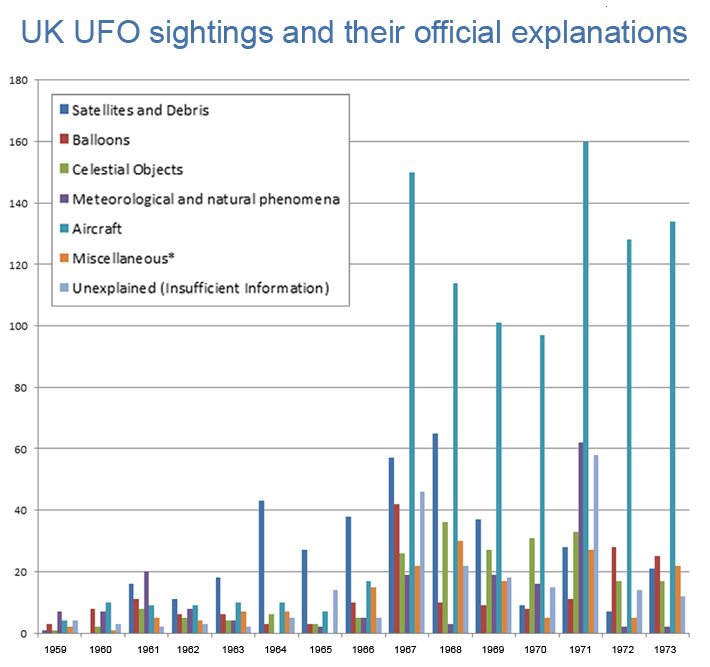The Roswell incident: how ‘UFO sighting’ sparked 70 years of conspiracy theories
A US government ‘cover-up’, the declassification of top secret files and big-budget alien movies have fuelled interest in UFOs

On 8 July 1947 the Roswell Daily Record newspaper published a front page article with the headline “RAAF Captures Flying Saucer On Ranch in Roswell Region”, and the legend of America's most famous brush with aliens was born.
Today, many conspiracy theorists consider the so-called “Roswell incident” to be one of the most conspicuous pieces of evidence that the US government has covered up the existence of extraterrestrial life on Earth.
Next month thousands of people from all over the world will travel to the town, the de facto UFO capital of the world, but the Roswell story's position in the public imagination was far from immediate.
The Week
Escape your echo chamber. Get the facts behind the news, plus analysis from multiple perspectives.

Sign up for The Week's Free Newsletters
From our morning news briefing to a weekly Good News Newsletter, get the best of The Week delivered directly to your inbox.
From our morning news briefing to a weekly Good News Newsletter, get the best of The Week delivered directly to your inbox.
What was the Roswell incident?
On 7 July 1947, around 75 miles north of the town of Roswell in New Mexico, debris from a highly classified project used by the US Army Air Force (the precursor to the US Air Force) to detect atomic bomb tests in the Soviet Union, was recovered from a ranch after being reported by ranch worker William Brazel.
Intrigued by the idea of flying saucers, Brazel gathered some of the debris and went to Roswell where he told Sheriff George Wilcox about his find. According to reports he “whispered kinda confidential like”. Wilcox immediately reported the encounter to the USAAF base at Roswell which promptly sent agents to visit the ranch, but not before the press picked up the story.
What was reported at the time?
A free daily email with the biggest news stories of the day – and the best features from TheWeek.com
On 8 July 1947 Roswell Army Air Field (RAAF) issued a press release stating that a “flying disk” had crashed on a ranch near Roswell during a powerful storm. Later in the day, as government scientists arrived in the area, the story appeared to change. A press conference was held and it was stated instead that a weather balloon had crashed. Reporters were shown debris said to be taken from the crash area, such as foil, rubber and wood, which appeared to confirm that the object had been a weather balloon.
After initially suggesting that Brazel's debris had come from a UFO, the Roswell Daily Record reported a correction which included the USAAF statement that it was a weather balloon that had been found at the site. Brazel later went on record to say that he regretted the publicity that his misidentification had caused.
According to the official accounts, the debris Brazel found came from a balloon which was part of an experimental technology trial codenamed Project Mogul.
What was Project Mogul?
The classified Project Mogul was designed to detect sound waves in the upper atmosphere from Soviet atom bomb tests by flying microphones on trains of balloons at high altitude. Although the technology was quickly superseded, it remained secret for more than 20 years after the event. The fact that the balloon was involved in Cold War surveillance of the Soviet Union may have helped to propel rumours of a cover-up.
How did it become a cause celebre?
For 31 years the story was largely forgotten until The National Enquirer reported the original Roswell Daily Record story again, but not the correction. Following the publication of the new story, theories suggesting that the government's incomplete account had been an attempt to cover-up the discovery of an alien spacecraft began to take root.
What did other witnesses say?
Several people claimed to have seen debris scattered over a wide area and at least one person reported seeing a blazing aircraft in the sky shortly before it crashed, but the key account came from a former mortician, Glenn Dennis, who claimed in 1989 that a friend who worked as a nurse at the Roswell Army Air Field had accidentally walked into an examination room where doctors were bent over the bodies of three creatures. They apparently resembled humans, but with small bodies, spindly arms and giant bald heads.
In 1995, Ray Santilli, a London-based entrepreneur, released “footage” of an alien autopsy performed in Roswell in 1947. Experts immediately ridiculed the footage as a hoax and he admitted years later that it was almost entirely fake. Nevertheless, Santilli insisted real footage existed, but due to its poor condition he had been forced to recreate it.
Critics have questioned the validity of various witnesses and pointed out that many claims over the years have come from “friends of friends” who supposedly saw something out of the ordinary.
Stranger than fiction?
Coincidentally, the republication of the story came just one year after the release of Close Encounters of the Third Kind, a film about a government conspiracy covering up alien visits to Earth. The film was released in the USA in November and the following year in the UK. That year 750 sightings were officially documented in the UK by the Ministry of Defence UFO desk, the highest figure on record.
Did UFO sightings continue to increase?
Looking at UFO sightings data from both sides of the Atlantic, a direct correlation between popular films involving aliens and real world UFO sightings becomes evident. In 2009, The Guardian detailed the popular culture influences that may have helped propel UFO sightings in the UK in 1996. In the year that Independence Day and Mars Attacks were released there were 609 UFO sightings across the UK, significantly more than the years just before or after.

The MoD assembled detailed records of UK UFO sightings between 1959 and 1973 before cuts ended the program
Unofficial data, supplied by the National UFO Reporting Centre in America suggest that UFO sightings have been slowly increasing in the US since the 1970s, growing increasingly rapidly since the early 1990s.
One possible explanation for this is that the reporting centre became both better known and easier to contact with the advent of new technologies such as fax machines and the internet.
In 2014, The Economist analysed the available data from 2000 to 2014 and found that most UFOs were reported when people were drunk.
Did declassifying Project Mogul help?
Even though Project Mogul was declassified in the 1970s, it wasn't fully connected to Roswell until 1994 when the normally secretive National Security Agency finally published an in-depth report refuting all claims of a conspiracy at the site. A second report, released in 1997, concluded that reports of alien bodies actually related to life-sized anthropomorphic test dummies.
But by providing detailed analysis of the Roswell incident, many analysts believe that the US government inadvertently fuelled interest in conspiracy theories and public suspicions that the US military was involved in a cover-up.
Roswell: the UFO capital of the world
Because of the huge notoriety surrounding the Roswell incident, the town has become Ground Zero for UFO conspiracists.
Each year on the anniversary of the story, thousands of enthusiasts embrace all things alien and paranormal at a UFO Festival. There, they can dissect mock alien bodies and take part in scientific experiments.
Last year, to mark 70 years since the incident was first reported, around 38,000 people turned up from all over the world.
Kathy Lay, executive director for MainStreet Roswell, says:
“You have people all over the city. There will be some out at the mall at Galactic Con. Some will be at the UFO museum doing the seminars and workshops. You'll have some that will be going to the plays that are going on, some will be over at the planetarium, some will be here at this festival. They're all over - we just embrace it.”
-
 Heavenly spectacle in the wilds of Canada
Heavenly spectacle in the wilds of CanadaThe Week Recommends ‘Mind-bending’ outpost for spotting animals – and the northern lights
-
 Facial recognition: a revolution in policing
Facial recognition: a revolution in policingTalking Point All 43 police forces in England and Wales are set to be granted access, with those against calling for increasing safeguards on the technology
-
 Sudoku hard: December 14, 2025
Sudoku hard: December 14, 2025The daily hard sudoku puzzle from The Week
-
 Femicide: Italy’s newest crime
Femicide: Italy’s newest crimeThe Explainer Landmark law to criminalise murder of a woman as an ‘act of hatred’ or ‘subjugation’ but critics say Italy is still deeply patriarchal
-
 Brazil’s Bolsonaro behind bars after appeals run out
Brazil’s Bolsonaro behind bars after appeals run outSpeed Read He will serve 27 years in prison
-
 Americans traveling abroad face renewed criticism in the Trump era
Americans traveling abroad face renewed criticism in the Trump eraThe Explainer Some of Trump’s behavior has Americans being questioned
-
 Nigeria confused by Trump invasion threat
Nigeria confused by Trump invasion threatSpeed Read Trump has claimed the country is persecuting Christians
-
 Sanae Takaichi: Japan’s Iron Lady set to be the country’s first woman prime minister
Sanae Takaichi: Japan’s Iron Lady set to be the country’s first woman prime ministerIn the Spotlight Takaichi is a member of Japan’s conservative, nationalist Liberal Democratic Party
-
 Russia is ‘helping China’ prepare for an invasion of Taiwan
Russia is ‘helping China’ prepare for an invasion of TaiwanIn the Spotlight Russia is reportedly allowing China access to military training
-
 Interpol arrests hundreds in Africa-wide sextortion crackdown
Interpol arrests hundreds in Africa-wide sextortion crackdownIN THE SPOTLIGHT A series of stings disrupts major cybercrime operations as law enforcement estimates millions in losses from schemes designed to prey on lonely users
-
 China is silently expanding its influence in American cities
China is silently expanding its influence in American citiesUnder the Radar New York City and San Francisco, among others, have reportedly been targeted